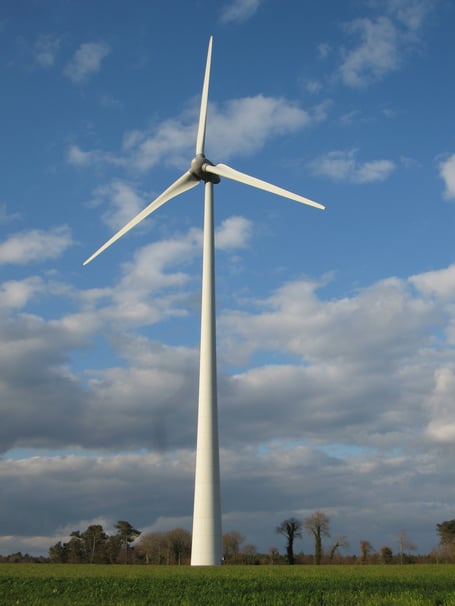The development of a new wind farm invariably gives rise to concerns about the visual impact on the landscape and the perceived negative effect on tourism. Yet studies have found that the presence of wind turbines does not result in a decrease in tourism numbers or spending. On the contrary, many visitors express a positive feeling towards seeing the green transition in action.
Unsurprisingly, the research shows that an individual’s response to wind turbines depends on their views on the use of wind energy. Fortunately, polling data consistently shows public support for wind power; the government’s own Public Attitudes Tracker, in 2024, found 84% of people support the use of renewable energy such as wind power, with only 2% opposing.
Surveys of businesses and venues close to wind farms suggest that they too can benefit. One beach café owner reported, “My cafe overlooks the wind farm and it is often a subject of conversation with customers, both tourists and locals alike. The vast majority approve of it, it can be mesmerising at times with the individual units appearing to change colour in the light, children like to count them, and the idea of green energy is very popular.”
Visitors enjoy both the scenery and the turbines. In the age of Instagram and TikTok, the scale and sculptural design of turbines can make a dramatic backdrop for a photograph. Turbines blend technology and modern engineering with the natural beauty of the land, sea and sky. The Journal of Sustainable Tourism reports that, “75-90% of tourist respondents display a neutral to positive attitude towards onshore windfarms in UK rural landscapes”.
Some wind farms offer visitor centres, cafes and viewing platforms that appeal to eco-conscious visitors and families. Rampion Visitor Centre on Brighton seafront offers exhibitions, videos, a virtual reality experience, and interactive displays to educate visitors about wind energy and the Rampion Offshore Wind Farm.
Some people want to see the turbines up close. Fishermen run regular boat trips to offshore wind farms for both visitors and locals. Fishing and wildlife trips are also popular, as offshore wind farms are one of the few areas in UK seas where bottom trawling is not permitted, allowing marine life to recover. The turbine footings even act as artificial reefs creating fish nurseries that boost fish numbers, which in turn attracts dolphins and seals.
The supply chain for wind energy projects, including manufacturing, construction and port development, creates thousands of jobs. Doubling onshore wind capacity to 30GW by 2030 is expected to create an additional 27,000 jobs. The UK offshore wind industry already employs 32,000 people and each new large offshore wind farm adds £2-3bn to the economy. According to the Crown Estate, employment is set to rise to over 100,000 by 2030 and investment in new offshore wind projects will create up to £92bn for the UK by 2040.
From the iconic turbines dotting the landscape to dedicated visitor experiences, wind farms provide a sustainable boost to regional economies.





Comments
This article has no comments yet. Be the first to leave a comment.